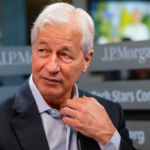China has reinstated import levies on coal from the beginning of the year, a move that potentially endangers Russian exporters heavily reliant on the world’s largest market for the fuel. The tariffs, initially removed in May 2022 to mitigate supply risks following Moscow’s invasion of Ukraine, led to record imports last year, including an increased share of Russian coal that was avoided by other buyers. However, the shift in policy aims to shield China’s mining companies from the consequences of a surplus caused by a surge in domestic output to an all-time high.
As the no. 2 shipper of coal to China, Russia aspires to achieve an annual supply of 100 million tons, a target likely to be met in 2023. However, maintaining these volumes will require Russian coal prices to decrease.
Su Huipeng, an analyst with the China Coal Transport and Distribution Association, emphasized, “No other countries can take in such large supplies. It has to be exporters cutting prices and absorbing the additional tax cost.”

Russia’s monthly coal sales to China have dwindled since peaking at over 10 million tons in June, as their shipments faced growing competition from other sources. The reimposition of taxes is expected to exacerbate this dynamic.
In contrast, competitors such as Australia and Indonesia, top coal suppliers, are shielded from duties due to free trade pacts with Beijing. Additionally, Moscow has levied a tax on its overseas sales to fund its war.
China’s duties for most-favored nations, including Russia, Mongolia, South Africa, and the US, have reverted to 6% on power and heating coal and 3% on coking coal for steel mills. Thermal coal, abundant in China, might help mitigate the impact on those imports. However, coal from countries without preferential status will face a 20% tax.
The article also provides a schedule of key events in China’s coal industry for the week ahead and highlights a private gauge showing unexpected expansion in China’s manufacturing activity in December. This contrasts with official data indicating a weakening in the industrial and service sectors, possibly paving the way for the People’s Bank of China to consider rate cuts in January.









